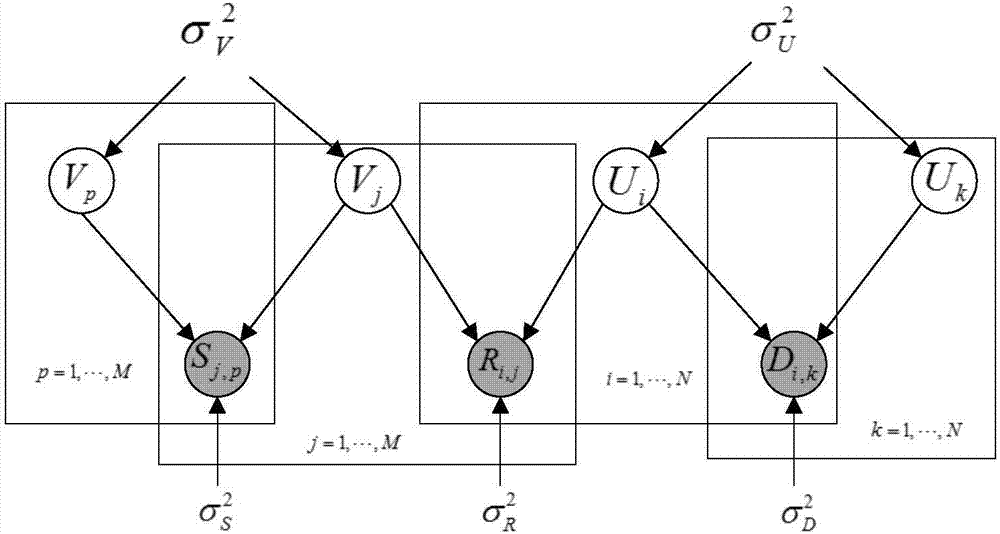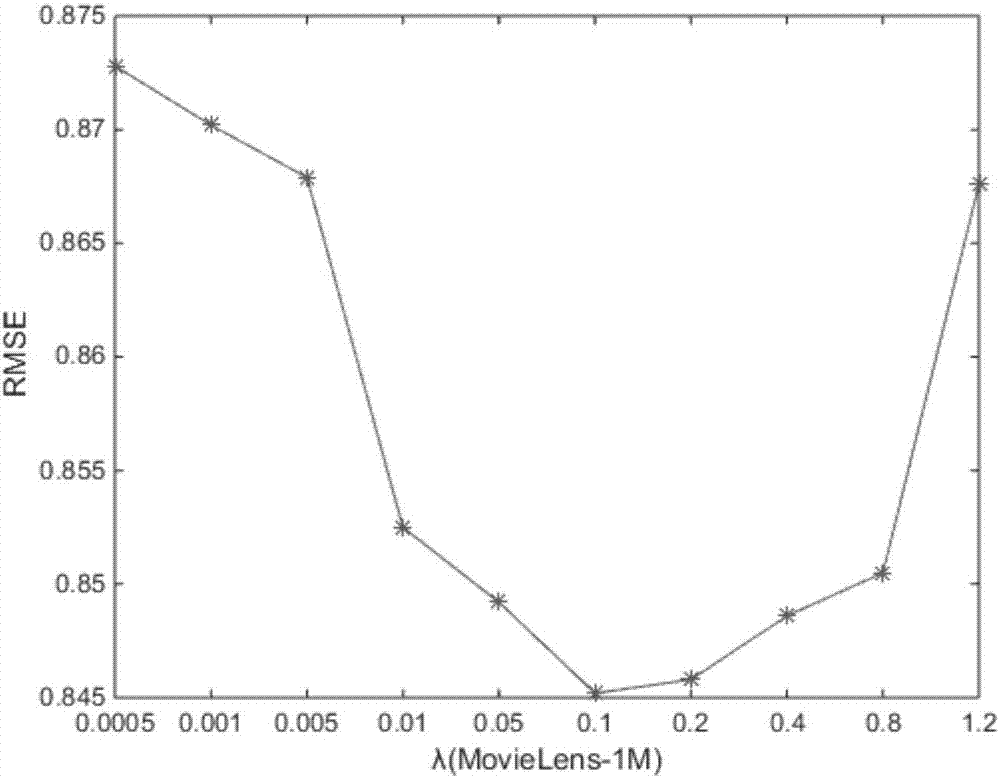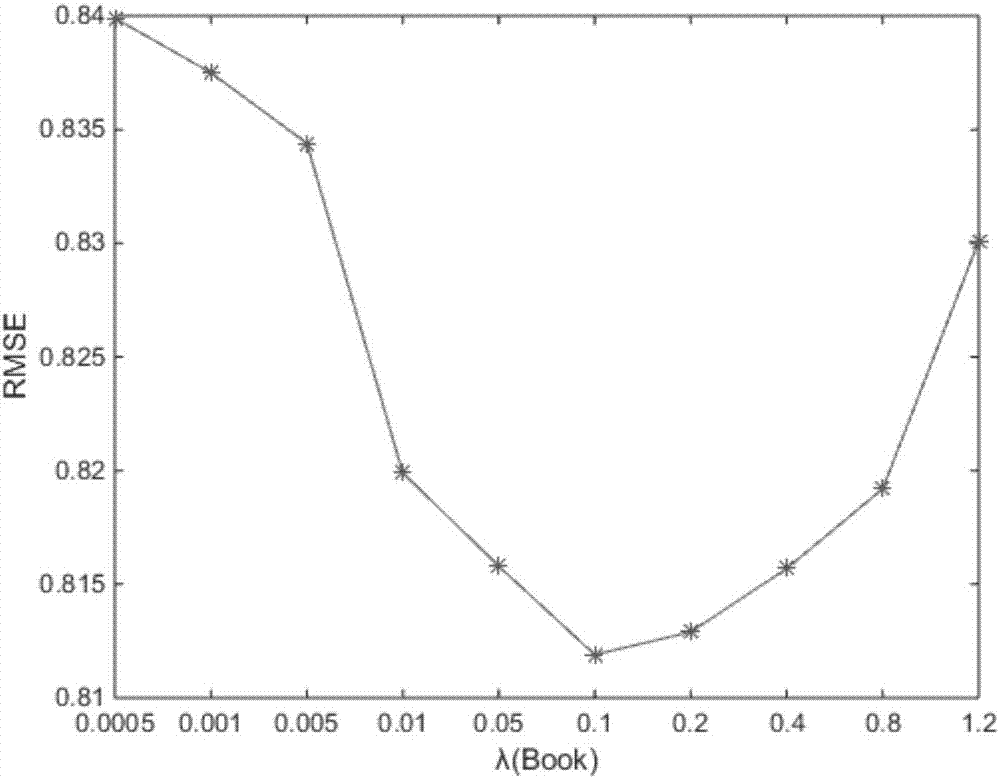Probabilistic matrix factorization(PMF) model realizing fusion of similarity and common rating item quantity
A technique of probabilistic matrix decomposition and scoring matrix, which is applied in the direction of electrical digital data processing, special data processing applications, instruments, etc., can solve problems such as ignoring, affecting recommendation results, and inability to deal with data sparsity, so as to improve quality and alleviate data loss. Sparsity problem, the effect of improving the recommendation accuracy
- Summary
- Abstract
- Description
- Claims
- Application Information
AI Technical Summary
Problems solved by technology
Method used
Image
Examples
Embodiment Construction
[0037] The present invention will be described in further detail below in conjunction with the accompanying drawings and embodiments, but these embodiments should not be construed as limiting the present invention.
[0038] Step 1: Establish user-item rating matrix R, where R i,j Indicates the ratings of users numbered i (i=1,2,..N) on items numbered j (j=1,2,3,..M), N and M respectively represent the number of users in the recommendation system and the number of items, if user i does not rate item j, then R i,j =0. After obtaining the matrix R, the scores are normalized by the following normalization function:
[0039] R i,j = R i,j / K (1)
[0040] Where K is the scoring range specified by the recommendation system (for example, when the recommendation system uses a 5-point scoring system, K=5)
[0041] Step 2: Establish scoring indicator matrix I R Indicates the user's rating of the item, if user i has rated item j, then otherwise
[0042] Step 3: Calculate the use...
PUM
 Login to View More
Login to View More Abstract
Description
Claims
Application Information
 Login to View More
Login to View More - R&D Engineer
- R&D Manager
- IP Professional
- Industry Leading Data Capabilities
- Powerful AI technology
- Patent DNA Extraction
Browse by: Latest US Patents, China's latest patents, Technical Efficacy Thesaurus, Application Domain, Technology Topic, Popular Technical Reports.
© 2024 PatSnap. All rights reserved.Legal|Privacy policy|Modern Slavery Act Transparency Statement|Sitemap|About US| Contact US: help@patsnap.com










